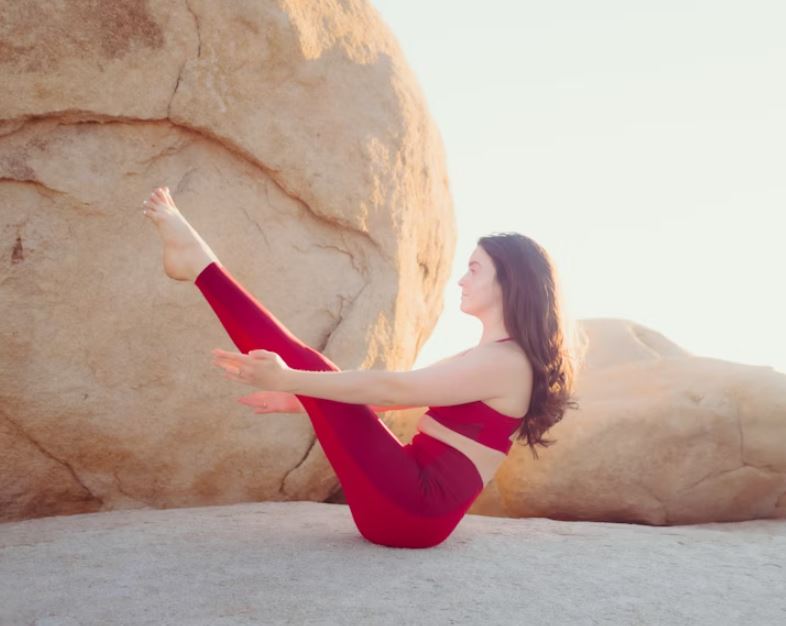Flexibility is more than just being able to touch your toes—it’s about creating mobility, balance, and ease in everyday movements. Practicing yoga is one of the most effective ways to improve flexibility because it combines stretching, strengthening, and mindful breathing. Whether you’re a beginner or an experienced practitioner, certain yoga poses are especially powerful for opening tight muscles and increasing range of motion.
In this guide, we’ll explore the best yoga poses for flexibility, along with tips to make your practice safe and enjoyable.
Why Flexibility Matters
Flexibility plays an important role in overall health and fitness. Here are some key benefits:
- Better posture – Stretching lengthens tight muscles, helping you stand and sit more comfortably.
- Reduced risk of injury – Flexible muscles and joints are less likely to strain or tear.
- Stress relief – Stretching helps release stored tension in the body.
- Improved performance – Whether in sports, dance, or daily activities, flexibility allows smoother movement.
- Joint health – A regular yoga practice keeps joints lubricated and mobile.
10 Yoga Poses to Improve Flexibility
1. Downward-Facing Dog (Adho Mukha Svanasana)
This classic pose stretches the hamstrings, calves, shoulders, and spine.
How to practice:
- Start on hands and knees.
- Tuck toes under, lift hips toward the ceiling.
- Press hands firmly into the mat and straighten legs as much as possible.
- Stay for 5–8 breaths.
2. Low Lunge (Anjaneyasana)
Great for opening tight hips and stretching the thighs.
How to practice:
- Step one foot forward into a lunge position.
- Drop the back knee down.
- Raise arms overhead for a deeper stretch.
- Hold for 5 breaths on each side.
3. Forward Fold (Uttanasana)
Stretches hamstrings, calves, and lower back.
How to practice:
- Stand with feet hip-width apart.
- Hinge forward from the hips.
- Let arms hang or hold opposite elbows.
- Breathe deeply for 5–8 breaths.
4. Pigeon Pose (Eka Pada Rajakapotasana)
A deep hip opener that releases tightness in glutes and hip flexors.
How to practice:
- From Downward Dog, bring one knee forward and place it behind your hands.
- Extend the other leg back.
- Fold forward over your front leg.
- Hold for 5–10 breaths on each side.
5. Seated Forward Bend (Paschimottanasana)
A calming stretch for the spine, hamstrings, and shoulders.
How to practice:
- Sit with legs extended straight.
- Inhale, lengthen the spine.
- Exhale, fold forward over the legs.
- Stay for 5–8 breaths.
6. Wide-Legged Forward Fold (Prasarita Padottanasana)
Opens the hamstrings, calves, and inner thighs.
How to practice:
- Stand with feet wide apart.
- Place hands on hips, then fold forward.
- Rest hands on the floor or on blocks.
- Stay for 5 breaths.
7. Butterfly Pose (Baddha Konasana)
Perfect for opening the inner thighs and groin.
How to practice:
- Sit with feet together, knees out to the sides.
- Hold feet with hands and gently press knees toward the floor.
- Lean forward slightly for a deeper stretch.
- Hold for 5–10 breaths.
8. Triangle Pose (Trikonasana)
Stretches hamstrings, hips, and spine while improving balance.
How to practice:
- Stand with feet wide apart.
- Turn one foot out and extend arms to the sides.
- Reach forward and place hand on shin or floor.
- Extend the other arm upward.
- Hold for 5 breaths each side.
9. Cat-Cow Stretch (Marjaryasana-Bitilasana)
Improves spinal flexibility and relieves back stiffness.
How to practice:
- Start on hands and knees.
- Inhale, arch the back (Cow).
- Exhale, round the spine (Cat).
- Continue for 5–8 cycles.
10. Bridge Pose (Setu Bandhasana)
Stretches the chest, spine, and hip flexors while strengthening the back.
How to practice:
- Lie on your back with knees bent, feet hip-width apart.
- Press into feet and lift hips toward the ceiling.
- Hold for 5–8 breaths.
Tips for a Safe Flexibility Practice
- Warm up first – Gentle movement prepares muscles for deeper stretches.
- Use props – Blocks, straps, and cushions can make poses more accessible.
- Breathe deeply – Exhaling helps release tension in tight areas.
- Go slow – Avoid forcing your body into a pose; flexibility takes time.
-
Practice consistently – Just 10–15 minutes a day can create noticeable changes.
